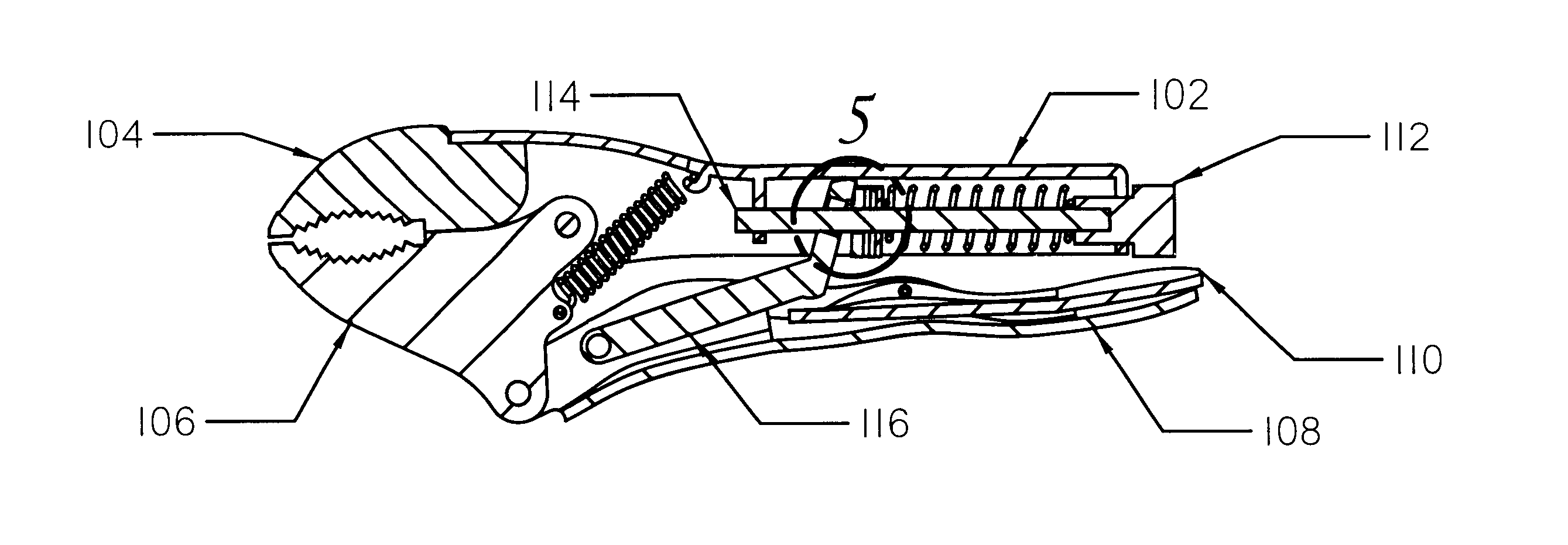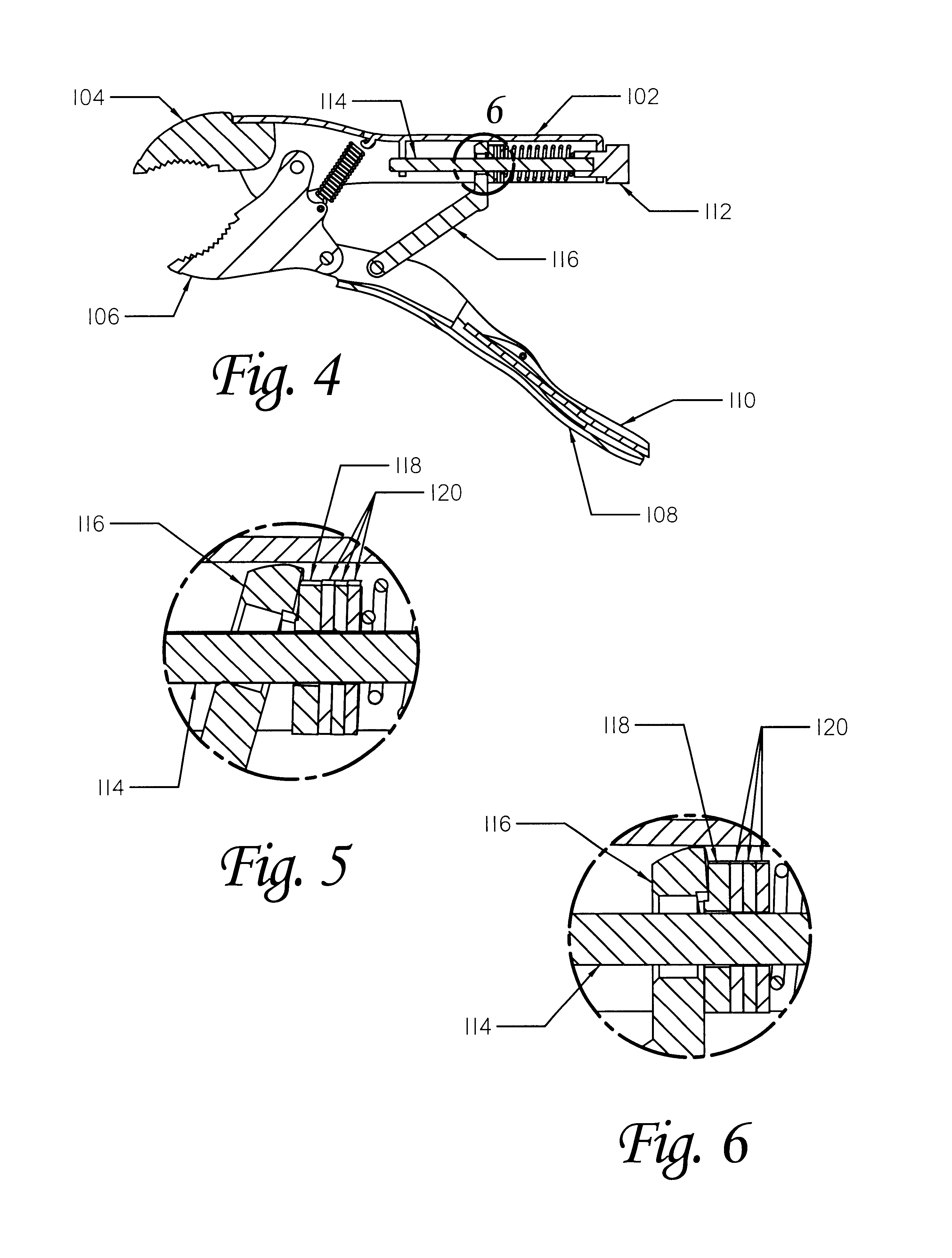Self adjusting mechanism for locking plier, wrench, or other tool
a self-adjusting mechanism and locking technology, applied in the direction of wrenches, pliers, manufacturing tools, etc., can solve the problems of slow manipulation of the adjustment screw, frustrating the user, and nearly impossible to make the adjustment one hand
- Summary
- Abstract
- Description
- Claims
- Application Information
AI Technical Summary
Benefits of technology
Problems solved by technology
Method used
Image
Examples
Embodiment Construction
The disclosed invention is described below with reference to the accompanying figures in which like reference numbers designate like parts.
Overview
The present invention is a self adjusting, variable grip strength closure mechanism for a locking plier or similar tool. It is described herein primarily with reference to an otherwise conventional locking plier. Much of that part of the structure of the plier which is not associated with the self adjusting or variable grip strength functions is much the same as that of a conventional locking plier. The frame, 102, serves as the fixed portion of the grips and is solidly attached to the fixed jaw, 104. The movable jaw, 106, is rotatably coupled to the frame and moves between open and closed positions relative to the fixed jaw. The handle, 108, moves inward and outward to close and open the plier respectively. It is rotatably coupled to the movable jaw and the push link, 116. When the push link locks to the D-rod (discussed below) the handl...
PUM
 Login to View More
Login to View More Abstract
Description
Claims
Application Information
 Login to View More
Login to View More - R&D
- Intellectual Property
- Life Sciences
- Materials
- Tech Scout
- Unparalleled Data Quality
- Higher Quality Content
- 60% Fewer Hallucinations
Browse by: Latest US Patents, China's latest patents, Technical Efficacy Thesaurus, Application Domain, Technology Topic, Popular Technical Reports.
© 2025 PatSnap. All rights reserved.Legal|Privacy policy|Modern Slavery Act Transparency Statement|Sitemap|About US| Contact US: help@patsnap.com



